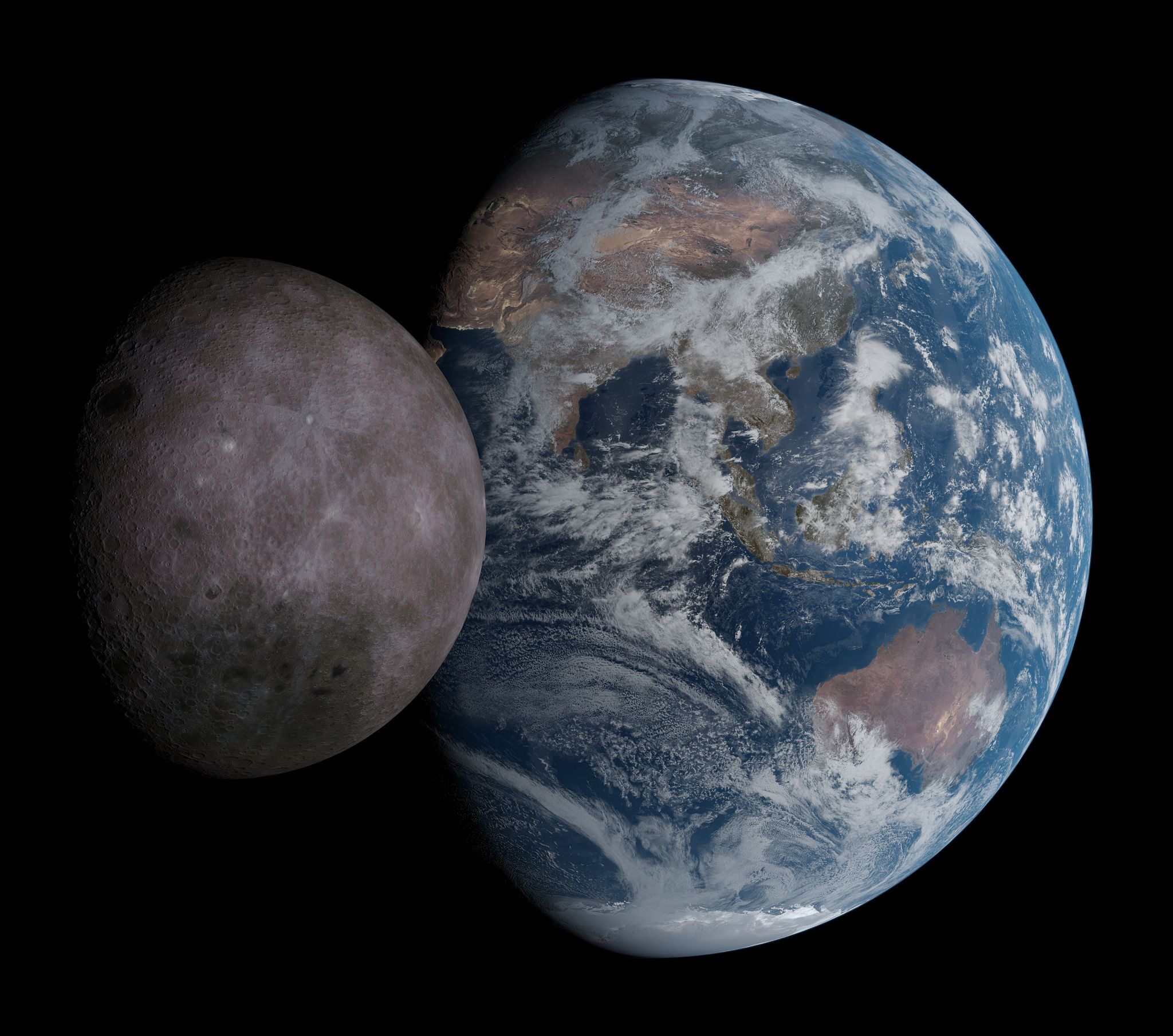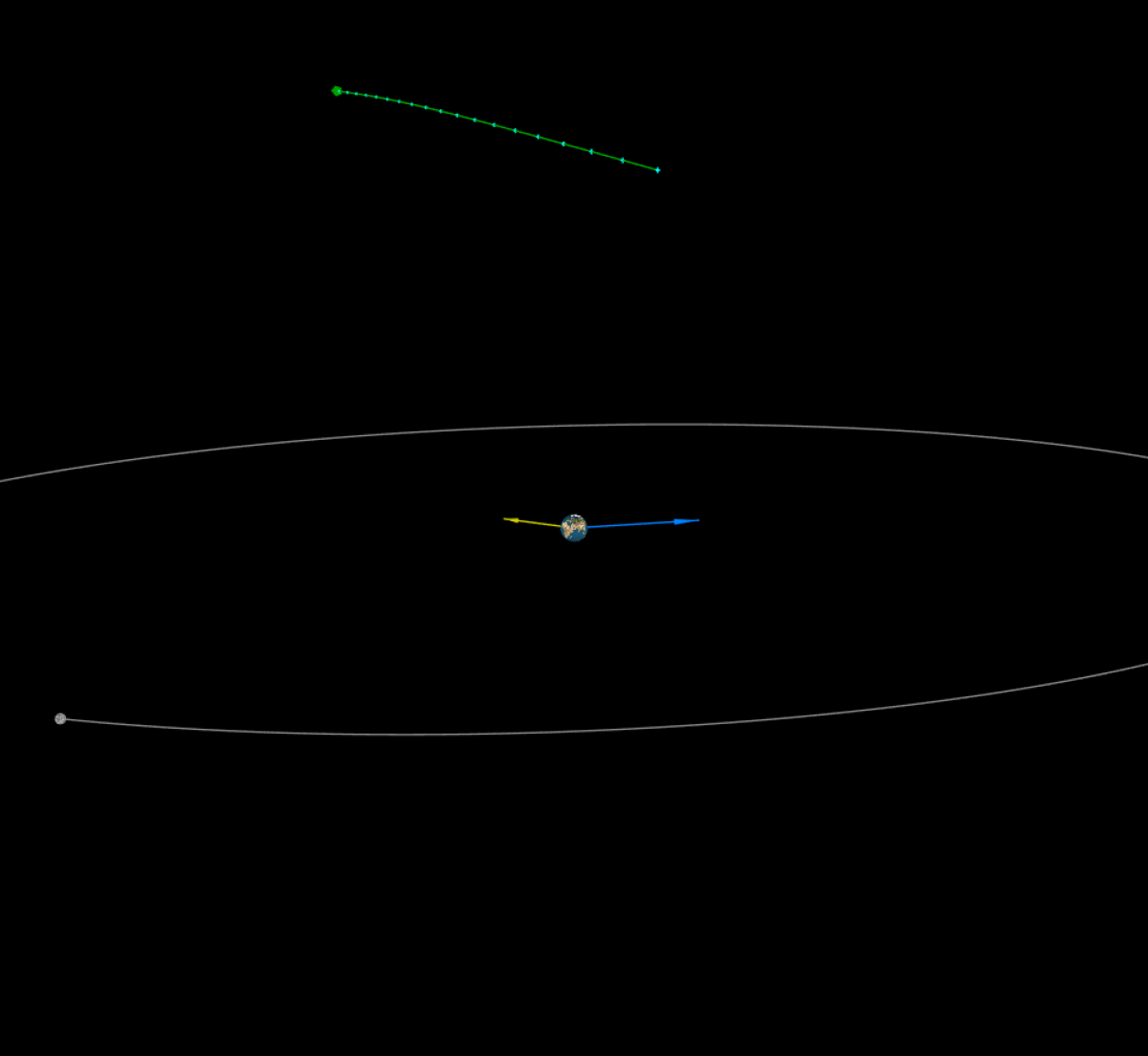
Updated | On Christmas Day, astronomers at the Mount Lemmon Survey near Tucson, Arizona, discovered an asteroid fast approaching Earth. The newly named 2017 YZ4 skimmed past the planet at 10:50 a.m. ET (7:50 a.m. PT) today.
Fast and furious
The previously unknown rock hurtled through space at almost 21,500 miles per hour. It flew past the Earth closer than the moon. It is believed to measure between 22.6 and 49 feet in diameter according to observation news website The Watchers.

Lindley Johnson, Planetary Defense Officer at NASA's Science Mission Directorate in Washington, D.C, tells Newsweek: "2017 YZ4 is the 52nd known asteroid to fly by Earth within one lunar distance this year and the first since two such asteroids flew past us on November 21. They varied from 1 to 80 meters [3 to 260 feet] in size."
Unusually close flyby
Astronomers estimate it reached less than 139,000 miles of Earth. That's only just longer than half the distance between the Earth and the Moon.
Even at its closest, 2017 YZ4 was incredibly unlikely to breach the Earth's atmosphere. However, it came unusually close for a celestial boulder.
NASA considers it a Near-Earth Asteroid. This designation is reserved for any asteroid closer than six million miles to Earth.
Johnson tells Newsweek, "As of December 25, there are 17,506 known Near-Earth Objects (NEOs), in orbits around the Sun that could come close to our planet; 17,400 are asteroids and 106 are comets.
"This year, we've discovered 1,996 Near-Earth Asteroids so far. There were 1887 such objects discovered in 2016 and 1,566 in 2015."
Celestial objects pass by the Earth regularly. Few, however, pass so close to home. NASA's Jet Propulsion Laboratory compiles a list of upcoming near-Earth flybys that can help you make sure you build an underground fallout shelter on time. Or, of course, just get out your telescope.
Over the 2018, the next closest asteroid to fly past Earth will be 2017 DR109. Don't start building your underground shelter just yet, as the hunk of rock shouldn't get closer than 880,000 miles from Earth. That is roughly three-and-a-half times the distance to the moon.
On Friday April 13, 2029, an asteroid called 99942 Apophis (2004 MN4) will come far closer to Earth than 2017 YZ4. It will fly past at only one-tenth the distance to the moon. Apophis is named for the Egyptian god of evil and destruction living in eternal darkness.
Don't be fooled by the name, however. While this is a remarkably close encounter, Apophis is unlikely to actually hit Earth.
There are many more asteroids waiting to be discovered, Johnson explains. "Near-Earth Asteroids are never 'new,'" he says. "They've been there for many millennia. We just haven't discovered them all yet."
Busy winter skies
This has been a big month for stargazers, with 2017's only supermoon and the Geminid meteor shower. The Geminids brought us a "potentially hazardous" 3200 Phaethon asteroid, imaged in new detail by the newly restored Arecibo Observatory Planetary Radar in Puerto Rico. The second-largest single-dish radio telescope in the world was damaged by Hurricane Maria earlier this year.
The most powerful astronomical radar system on our planet recently provided the highest-resolution images to date of a near-Earth asteroid, 3200 Phaethon, during its Dec. close approach to Earth, ~1.1 million miles away: https://t.co/h1DhS6t9xY pic.twitter.com/XGziN6vtBn
— NASA (@NASA) December 23, 2017
This article has been updated to reflect 2017 YZ4's journey past Earth and to include upcoming asteroid events in addition to comment from NASA's Lindley Johnson.
Uncommon Knowledge
Newsweek is committed to challenging conventional wisdom and finding connections in the search for common ground.
Newsweek is committed to challenging conventional wisdom and finding connections in the search for common ground.
About the writer
Katherine Hignett is a reporter based in London. She currently covers current affairs, health and science. Prior to joining Newsweek ... Read more
To read how Newsweek uses AI as a newsroom tool, Click here.








